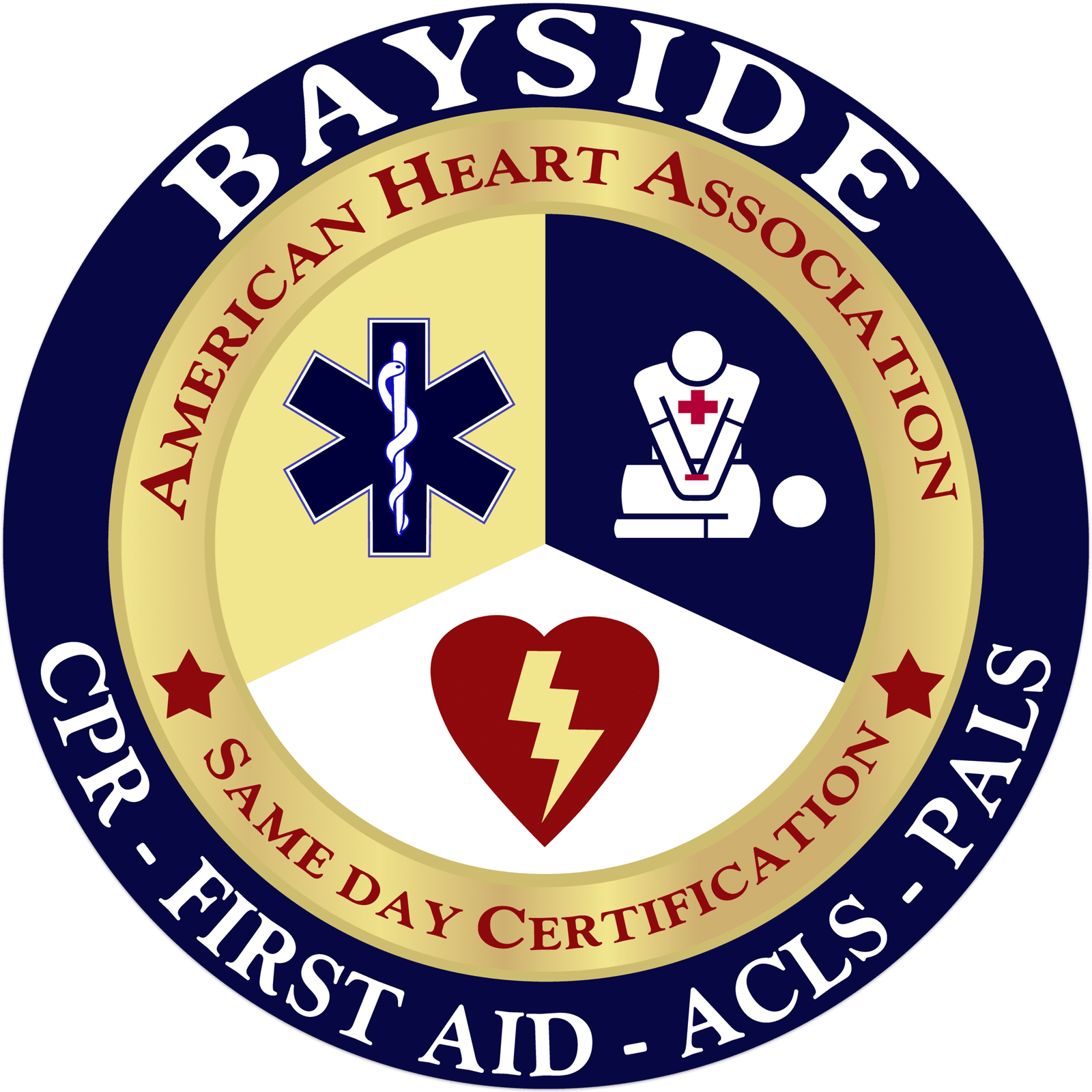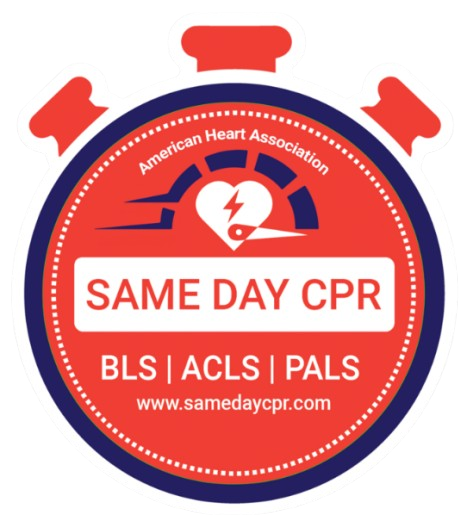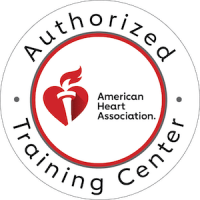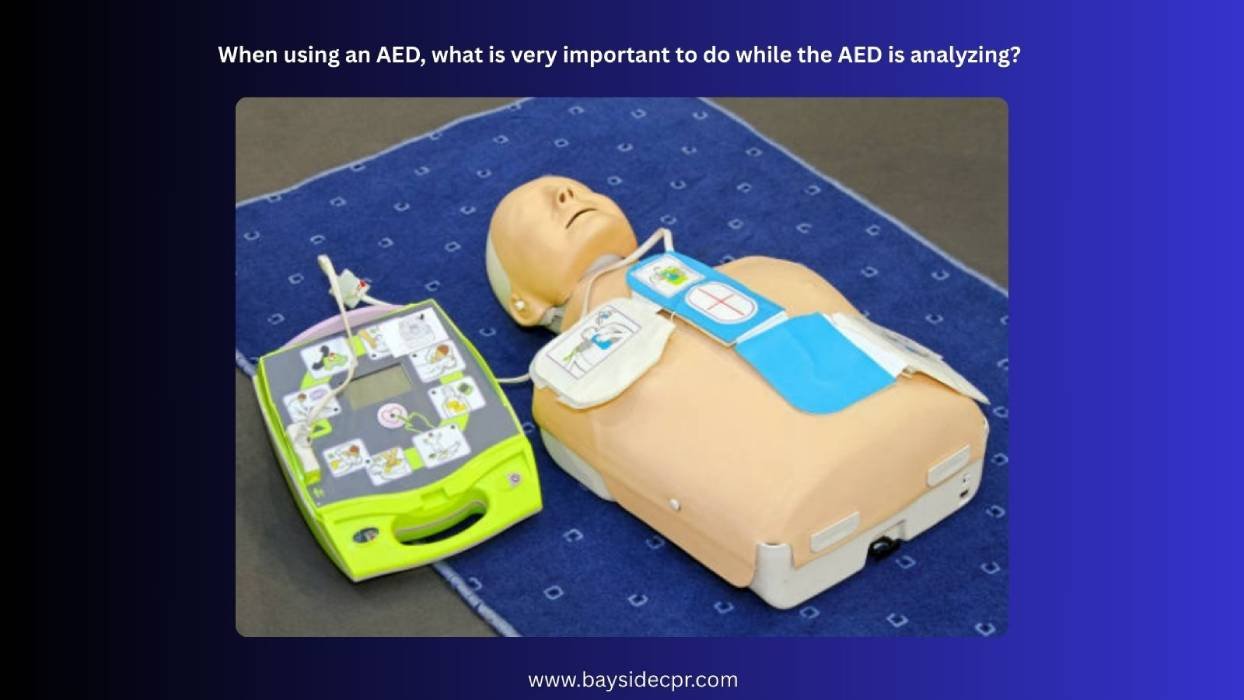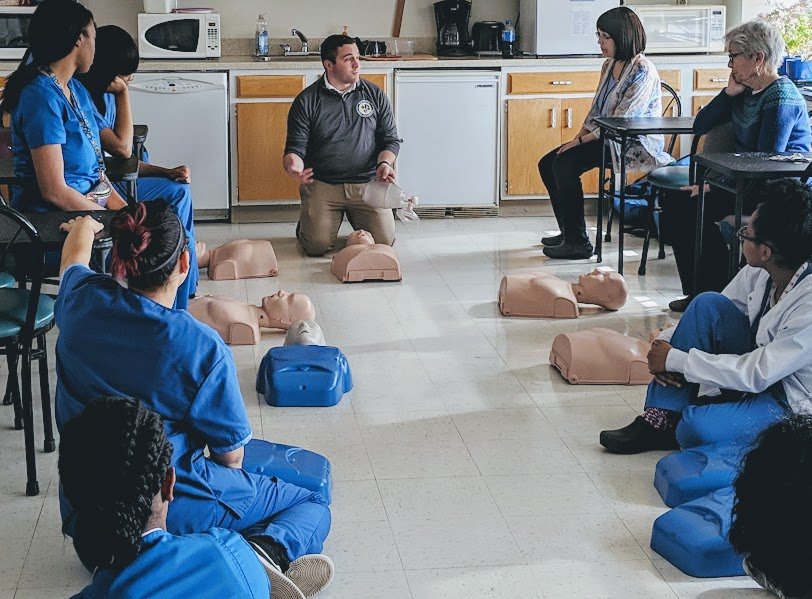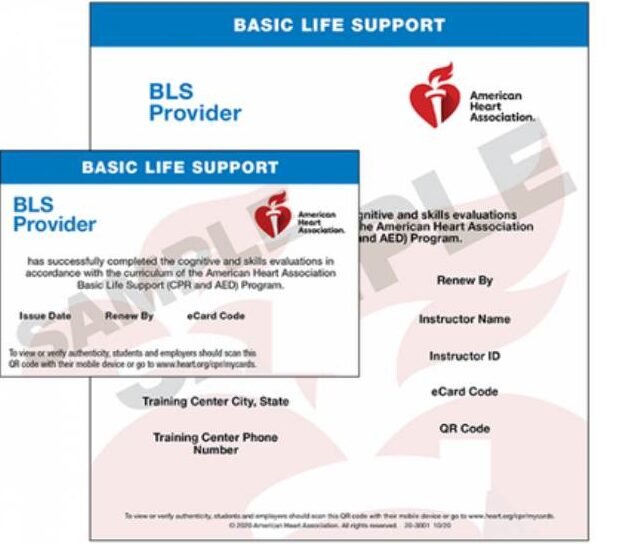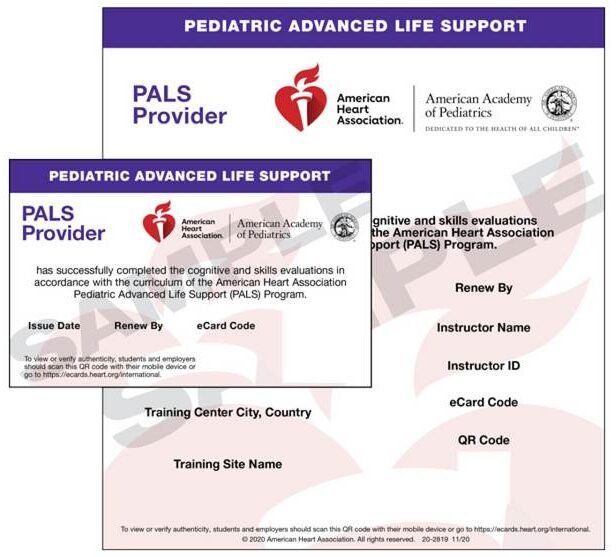It was a normal day at the park until someone collapsed from sudden cardiac arrest near the basketball court. People rushed over, unsure what to do, but one person grabbed the AED, or automated external defibrillator, from the wall nearby and stepped in to help. When someone’s heart suddenly stops, every second counts. That’s when an AED can make all the difference. It’s a small, easy-to-use device that can help restart the heart and save a life before emergency medical services arrive.
What happens during AED analysis?
When an AED starts its analysis, it checks the heart’s rhythm to see if a shock is needed or not. This happens right after you place the pads on the person’s chest and follow the prompts. The AED quickly looks for a dangerous rhythm, like ventricular fibrillation, that can be treated with a shock. It’s important not to touch the person during this step so the device can get a clear reading.
What is crucial to do while the AED is analyzing?
When the AED starts analyzing, it’s super important to stay calm and focused. Here’s what you need to do to keep things safe and effective.
- Pause CPR: Stop chest compressions and any rescue breaths right away. This gives the AED a chance to analyze the heart rhythm without interference. For more details on when rescuers can typically pause compressions during high-quality CPR, see our guidelines on timing interruptions.
- Ensure everyone stands clear: Look around and make sure no one is touching the patient. Say out loud, “Everyone clear,” so the team knows to back away.
- Do not touch the patient: Keep your hands off the patient completely. Even slight contact can affect the AED’s ability to read the heart correctly.
- Prepare for defibrillation: Get ready to deliver a shock if needed. Make sure the pads are in place and you’re standing clear with your finger near the shock button.
- Follow the AED prompts: Listen closely to the AED. It will guide you step-by-step, whether that means delivering a shock or starting CPR again. For a deeper understanding of how these two lifesaving tools work hand-in-hand, check out our guide on CPR and AED: When and How to Use Them Together.
Why is staying clear important during AED analysis?
When an AED checks the heart’s rhythm, staying clear helps it do the job right. It also protects you from legal and safety risks if something goes wrong.
1. Heart Rhythm Accuracy
Staying clear during AED analysis helps the device get an accurate reading of the heart’s rhythm. If someone touches the person, even slightly, it can confuse the machine and lead to the wrong decision, like skipping a shock or giving one when it’s not needed. That’s why it’s so important to let the AED do its work without any interference. Also understand the ECG rhythms recognition and interpretation for ACLS.
2. Ethical and Legal Implications
Staying clear during AED analysis isn’t just about safety; it’s also the right thing to do. If someone gets shocked because you were touching the person, it could lead to serious harm and even legal trouble. Following proper steps shows you’re acting responsibly and helps protect everyone involved. Proper use of an AED often comes under the Good Samaritan Law.
Common Mistakes Occurred During AED Analysis
Using an AED can be lifesaving, but simple mistakes can get in the way. Here are some common mistakes that happen during the analysis step and how to avoid them.
1. Not Activating AED
One of the most common mistakes is not turning on the AED right away. In a stressful moment, it’s easy to forget this simple step, but the device can’t help unless it’s powered on. Once activated, the AED gives clear voice prompts to guide you through every step.
2. Improper Pad Placement
Placing the AED pads in the wrong spot can prevent the device from working properly. The pads need to be placed on bare skin, one on the upper right chest and the other on the lower left side. If they’re too close together or not stuck on well, the AED might not read the heart rhythm correctly.
3. Delaying Analysis
Waiting too long to let the AED analyze the heart rhythm can waste precious time. As soon as the pads are in place, let the AED do its job. Every moment counts, and delays can reduce the chances of a successful shock. Just follow the prompts and don’t hesitate.
4. Not Following AED Prompts
Ignoring or missing the AED’s voice prompts can cause confusion and slow things down. The device is designed to guide you step-by-step, so listening carefully and following its instructions helps keep everything on track and gives the best chance for a good outcome.
5. Improper CPR During Analysis
Performing CPR while the AED is analyzing can interfere with its ability to read the heart’s rhythm accurately. It’s important to stay still and stop chest compressions during this time so the device can make the right decision on whether a shock is needed.
AED Training Options
Looking to learn how to use an AED with confidence? You’ve got options, whether you prefer hands-on in-person sessions, flexible online courses, or a mix of both.
1. In-person classes
In-person AED classes give you the chance to learn hands-on with an instructor right by your side. You’ll practice using the device and get immediate feedback, making it easier to feel confident when it counts. Plus, being in a group can help you stay motivated and ask questions in real time.
2. Online classes
Online AED classes let you learn at your own pace, anytime and anywhere. They’re great if you have a busy schedule or prefer studying from home. Plus, you’ll find videos and quizzes that make the lessons easy to follow and remember.
3. Blended classes
Blended AED classes combine the best of both worlds: online lessons you can complete on your own time, plus in-person practice to build your hands-on skills. This mix helps you learn flexibly while still getting real experience with the device.
Key Takeaways for Safe and Effective AED Use
When the AED is analyzing, the key thing is to stay completely still and make sure no one is touching the person. This helps the machine get a clear and accurate reading of the heart’s rhythm. By pausing CPR and standing back, you give the AED the best chance to decide if a shock is needed or not, something that can truly save a life. To learn more about how to reduce pauses during CPR, see what is recommended to minimise interruptions in compressions when using an AED. So, keep calm, listen carefully, and let the device do its job without interruption.
